In January I went to live and work in a small tribal village called Badanga in Rajasthan, India, along with international and national artists for two weeks. We were all selected to participate in the annual Sowing Seeds residency program, which has been hosted in different towns of Rajasthan for the past seven years. This was the first to be run at the farmhouse of Chiman Dangi, artist and founder of Sowing Seeds. The whole village, especially the children, were very excited.
I was drawn to apply to this residency because of their focus on site specific experimental work and dedication to involve and educate the village children through collaboration, building awareness of environmental issues and recycling. I’ve been in love with India since my first trip when I was 18 years old, and my last trip to India was in 1987, so I was intrigued and very excited to be going there again.
We were 24 artists living in freshly constructed mud huts and Rajasthani tents in a small unspoilt village populated with hardworking country people. Goats, cows and dogs were everywhere. There was no caste system here, and the village had its own religious ceremonies and traditions, and it seemed extra special because of this.
In the daytime the women were busy looking after the animals and collecting wood for cooking, bringing it back piled on top of their heads. Barefooted children were quickly coaxed out of their
shyness and into big smiles, laughter and dancing, running about trying to keep up with us in everything we did. Badanga was bathed in an intense light and heat until 5pm, when quickly it got cold and dark. We all kept warm outside around a big campfire.
During the days all the artists went in different directions and dedicated themselves to their projects. They gave painting, craft and musical workshops in the local schools and forged collaborations with each other and with the village people, especially with the children.
I went painting in the early mornings. The landscape and vegetation was strangely similar to home, which is Andalucia. The feeling of course was different and I loved my time using watercolours which dried in an instant in the intense and vivid morning light.
The whole village seemed to be taken over by novelty and the happiness that brings, the villagers curious about us and the artists exploring and curious about everything. It was made clear from the beginning that we could work anywhere we liked, the village was made totally available for us, like a blank canvas. I set up my papermaking studio in the shade of a tent and began recycling children’s textbooks from the school and dyeing paper with the local clay colours. The same colours had been mixed up to decorate the new mud huts and paint a welcome for us at the entrance to the residency. I found a wheelbarrow to use as a papermaking vat and made some makeshift moulds from canvas stretchers.
I imagined making paper with the children, but on the second day I started doing monoprints on the clay dyed papers and the children gathered around. From that day on they came to do monoprinting, calling it excitedly painting! painting! The children drew for joy, absorbed in the process and not attached to the outcome, and they made lots of colourful line drawings from their imagination.
Meanwhile I made long lengths of paper from the pulp of the kozo tree, which was growing in the garden and the school playground. This makes the most beautiful strong but delicate paper, due to it’s long fibres. Along with dyeing some of the paper I added small scraps of old saris, marigolds and roses from a big pile of used flower garlands.
Many of the artists wanted to learn how to make paper and some of them used it in their own projects. So when the children went running home because they were hungry I was lucky to spend time with artists from Russia, Vietnam, India and Bangladesh through the process of sharing the technique of paper making.
During the last few days I gathered together the children’s drawings, and began combining them with my handmade papers. The cook’s daughter helped me sew all the work together into a finished piece and an accordion book, both full of the children’s work. She was the seamstress of the village. I was looking forward to showing the children their drawings in a new way.
Thoughout the residency there was a wonderful atmosphere of creativity, sharing and support. The artists were focused, whilst open to collaboration and helping one another. We all had a deadline of the final exhibition and the daylight hours went by very quickly. I mounted my paper piece on the farm’s ladder and titled my collaboration with the children One Step at a Time. My piece, being mounted on a very large and rustic ladder, was mobile, which I was happy about. We put it in various places, my favourite being leaning on a branch of the huge mango tree in the school playground.
Being busy every minute of every day, I had little idea what many of the artists where actually doing, so I was very excited to see their work on our last day, when the village was open for our exhibition. Here I would like to share some of the artists’ finished works, which I found inspiring.
Ritu Mehra came from Delhi and painted huge parts of a mountain a calm and meditative sky blue with the help of the village children, who climb like mountain goats.
Nilesh Shidhpura made a sculpture recycling old saris and using the local materials of bamboo and slate, beautifully placed in a majestic mountain backdrop.
Textile and performance artist from Holland, Lola Bezemer collected sari pieces caught up in the bushes (used by the women to tie the bunches of firewood together) and wove them into colourful tapestries and hanging pieces.
Russian glass artist Julia Rockina made paper with me for her own enjoyment and spent her days painting in nature and surprised us all with a line of small works beautifully presented on the wall of a typical village house.
We watched a performance by Jasmin Sutherland from Scotland who superimposed the intense colour of her orange ribbon onto the dramatic cliff landscape by moving along with it.
African artist Ellis Oyekola made his work on the main gate, using complimentary colours and geometric shapes typical of his work.
There was a lot of music and dancing throughout the whole residency. Canadian musician Zaynab Wilson and Azra Bhagat from India worked together with the children in the local schools making musical tapestries to wear and instruments with recycled local materials. Linh Valerie Trang, a puppeteer from Vietnam, as well as making paper from banana leaves, made an interactive game with puppets she made out of rocks which she played with lots of over-excited children.
Indian sculptor Harendra Mahato literally sowed seeds into animal dung which he shaped into a tree on the wall of a village house and as the two weeks drew to a close the trees ‘leaves’ were sprouting and turning green.
This is of course only a sample of works from some of the artists from the residency.
I will finish with Azra Bhagat’s poem Believing, which I first heard her reading around the fire one night. Later she made the paper for the book with me and the tapestry cover with Lola. Its core message seems apt for what has happened shortly after we all returned home, the 3 months of isolation due to Covid 19.
※
※
Annabel Keatley / The Rowley Gallery


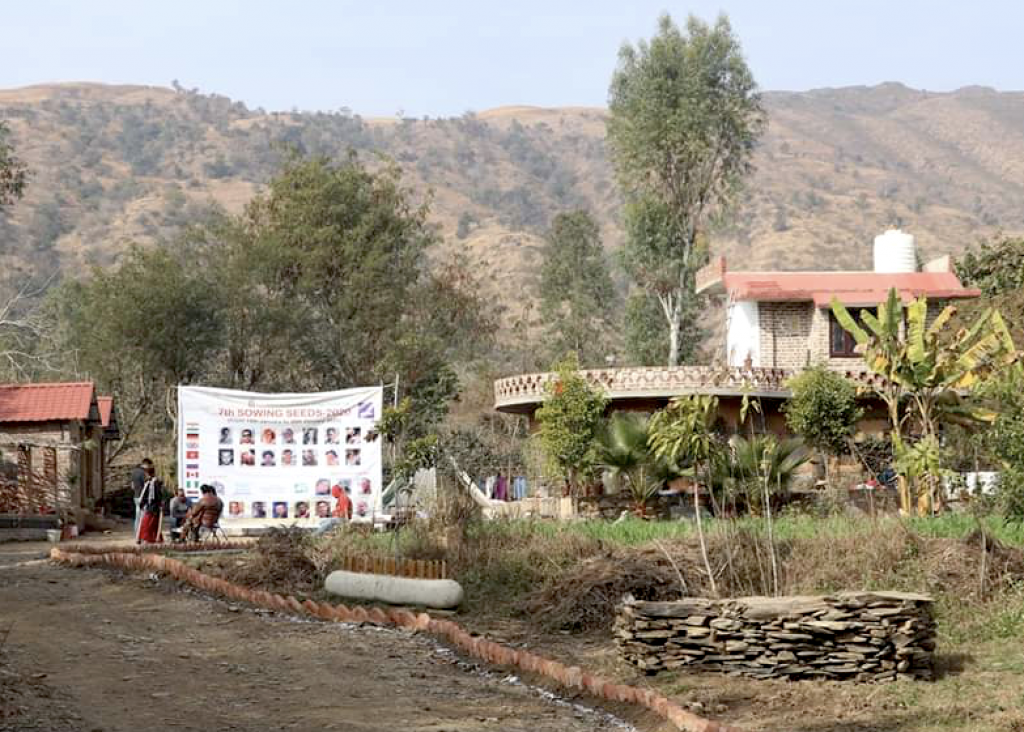
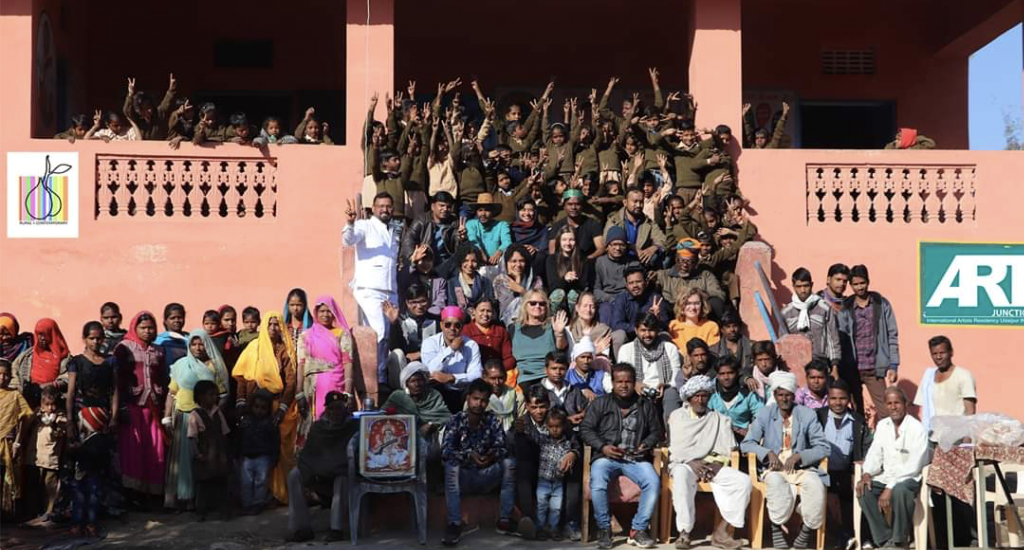
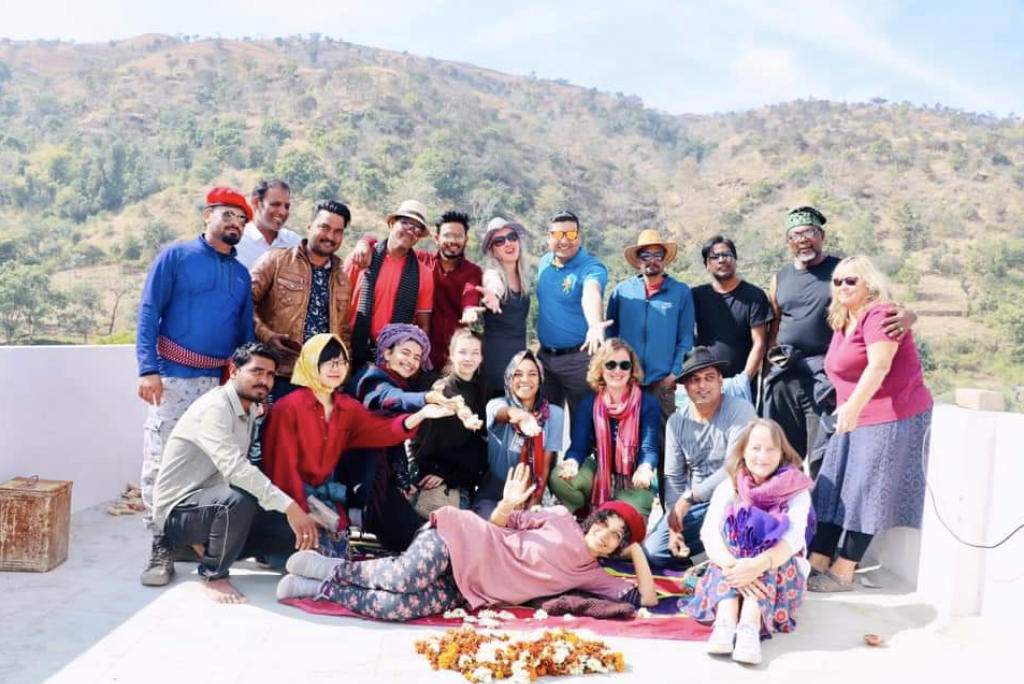
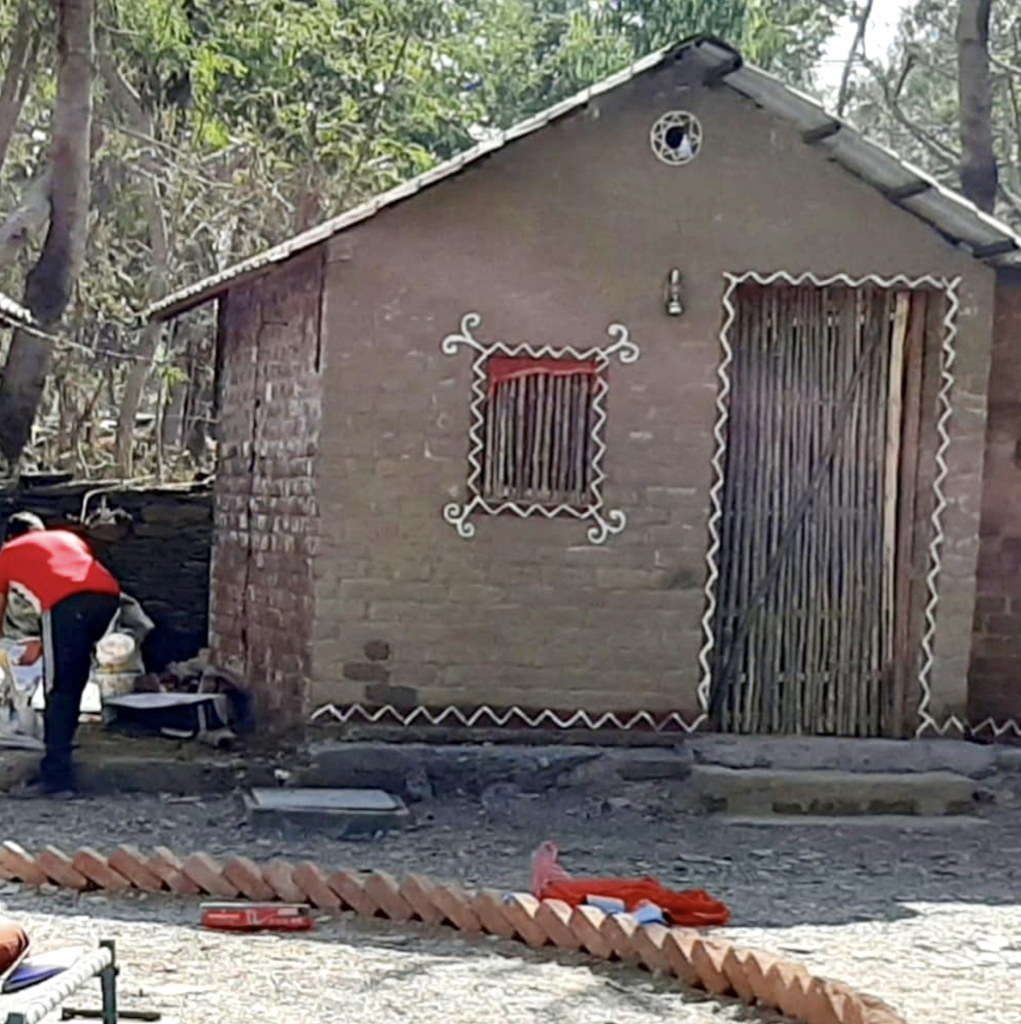
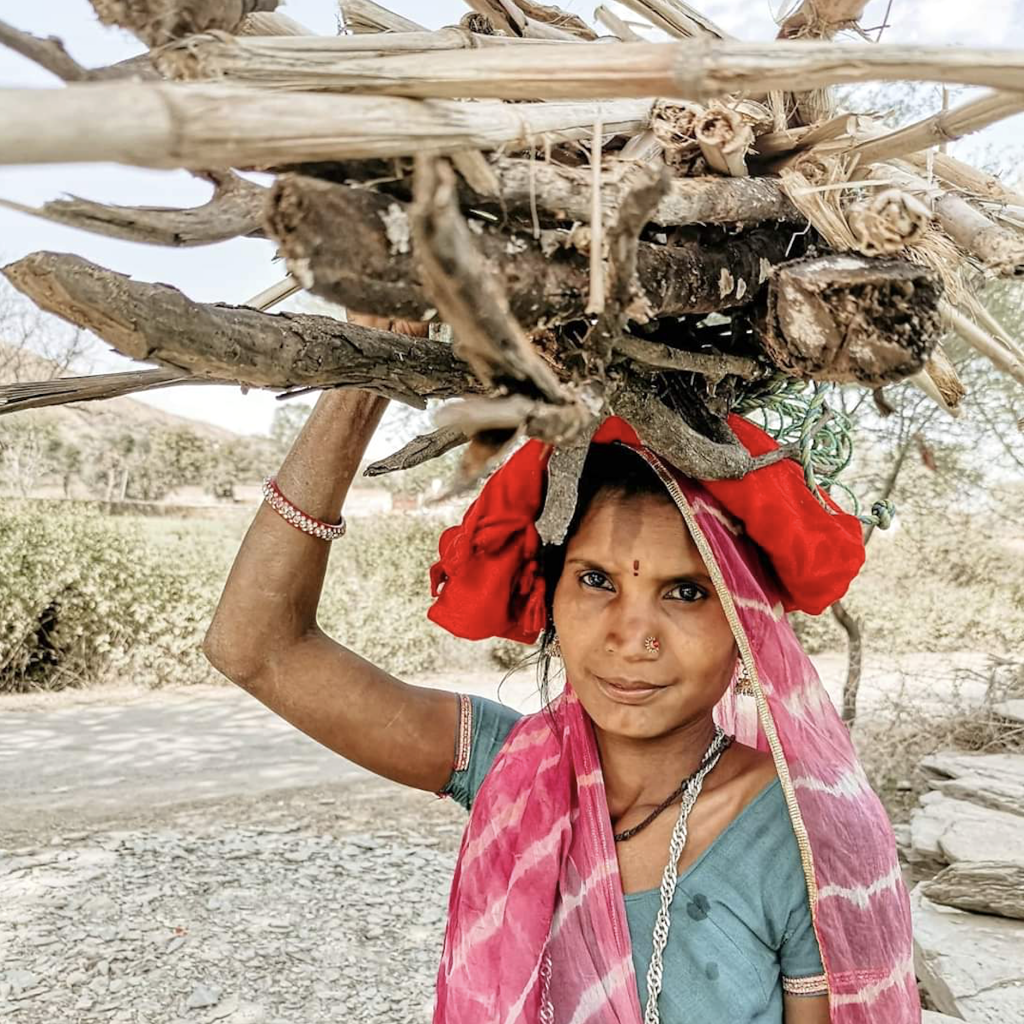
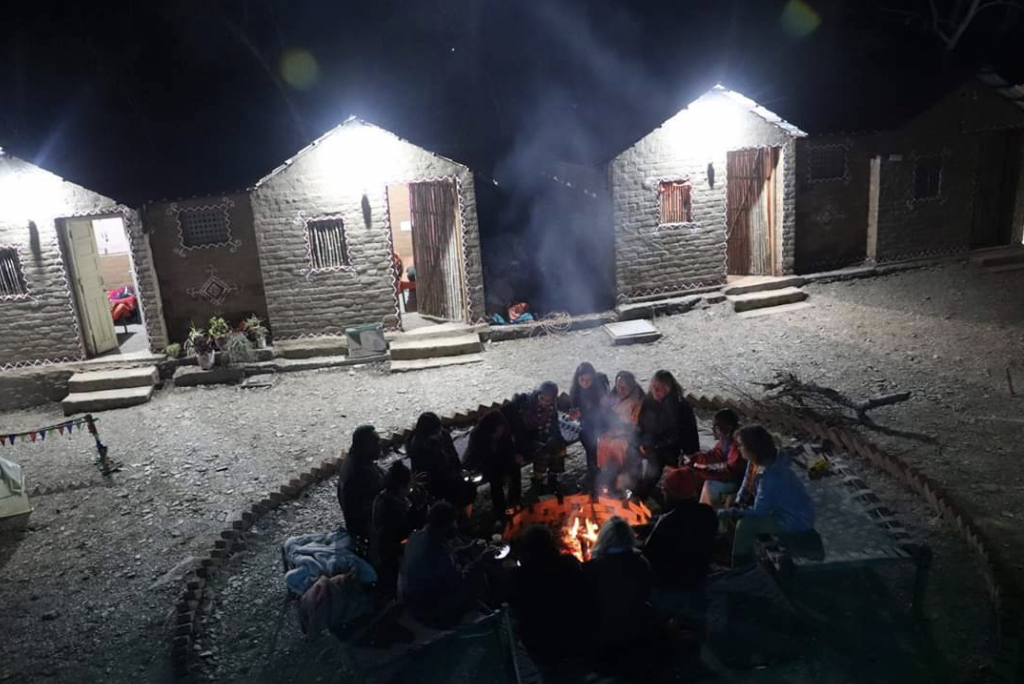
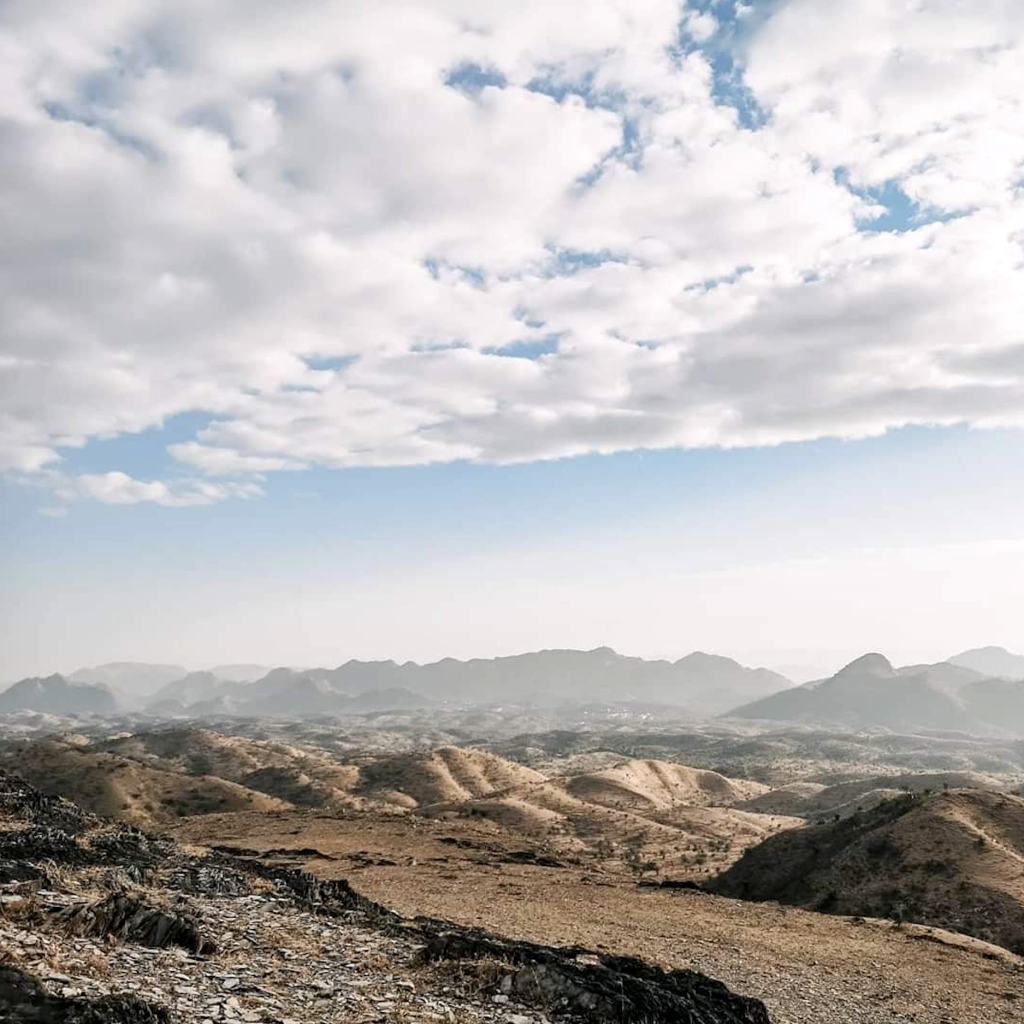
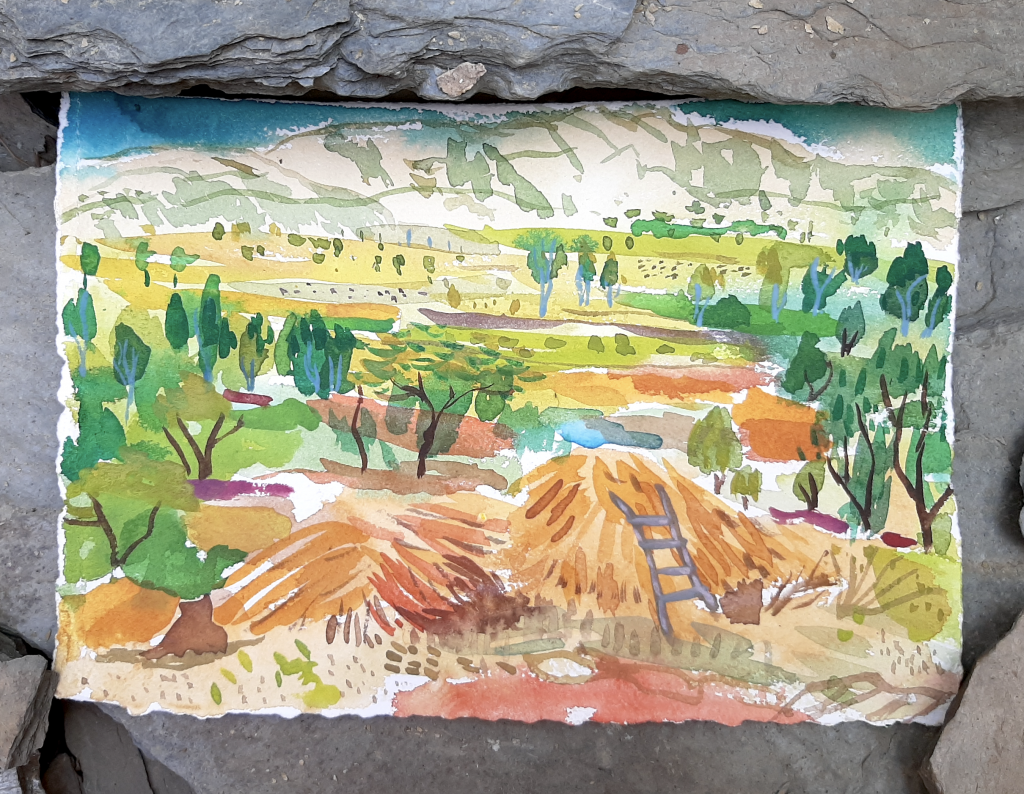
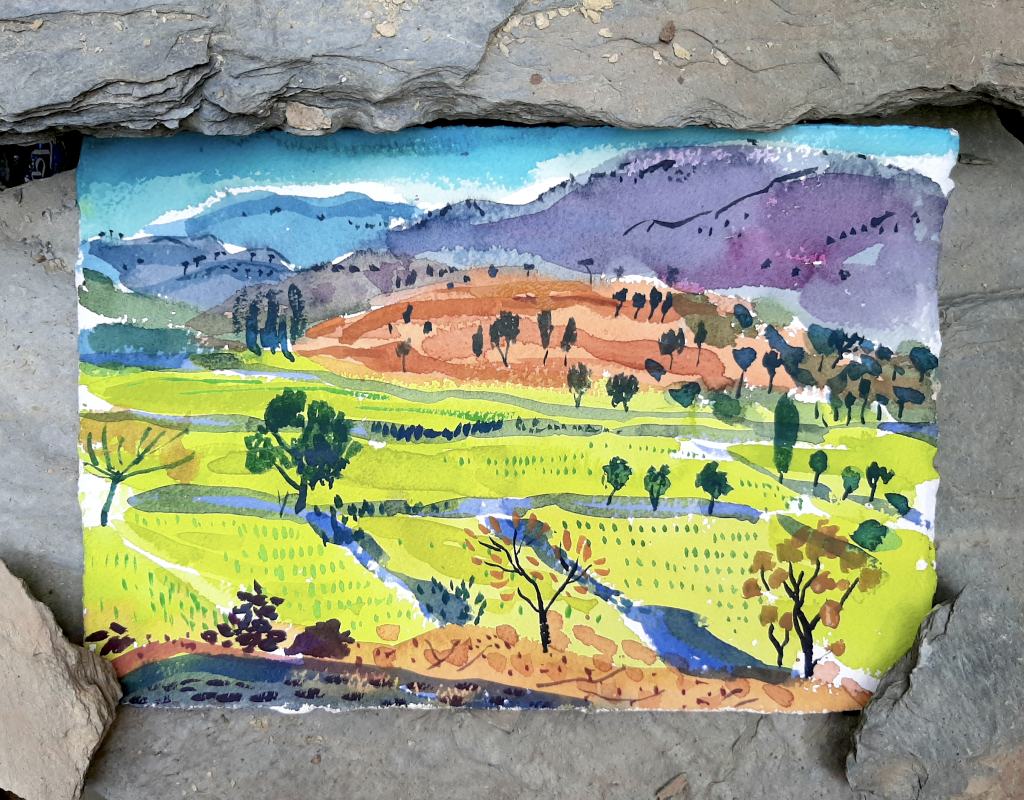
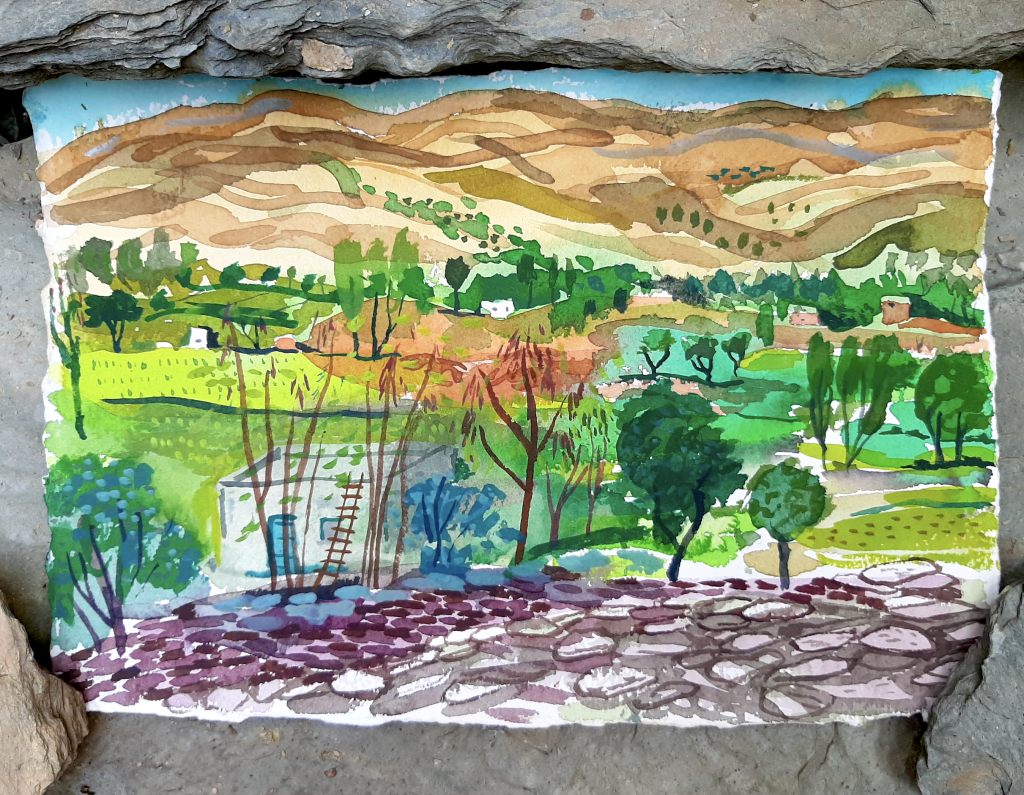
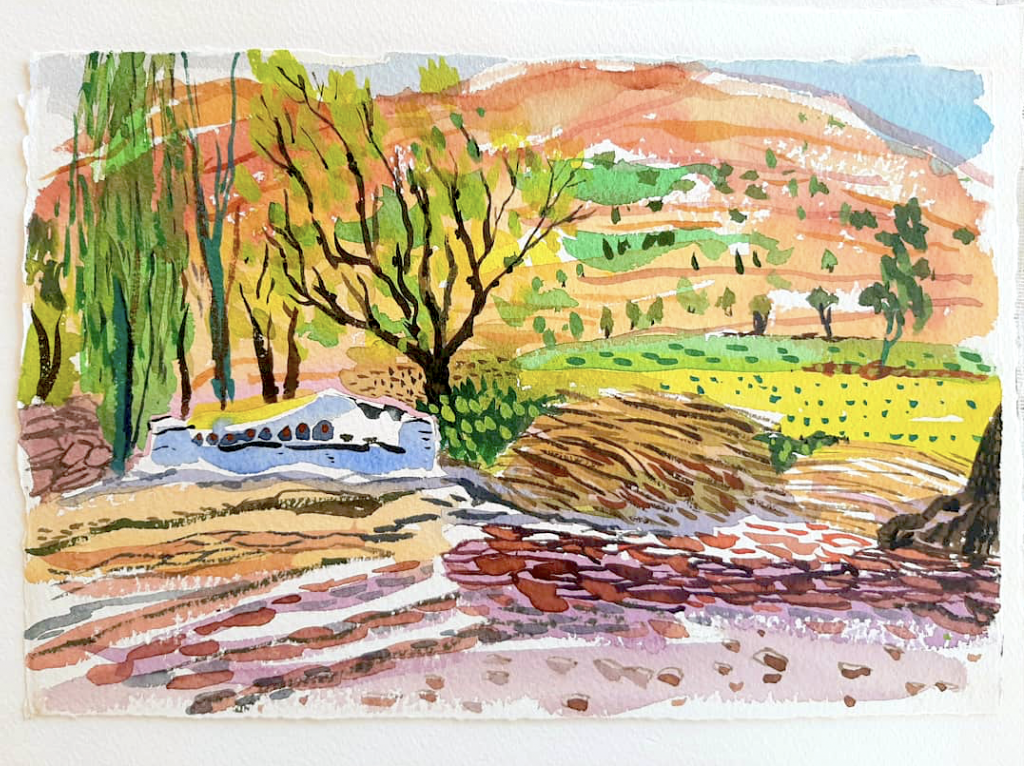
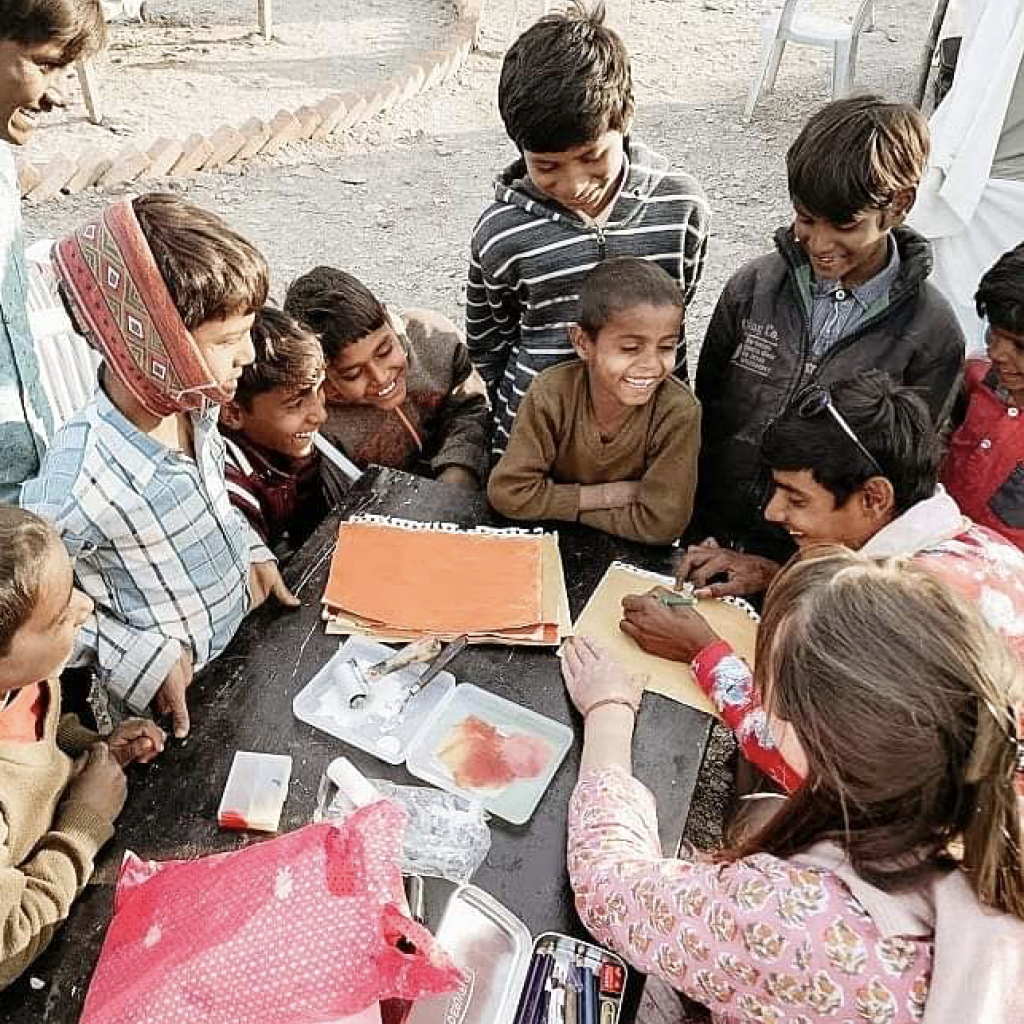
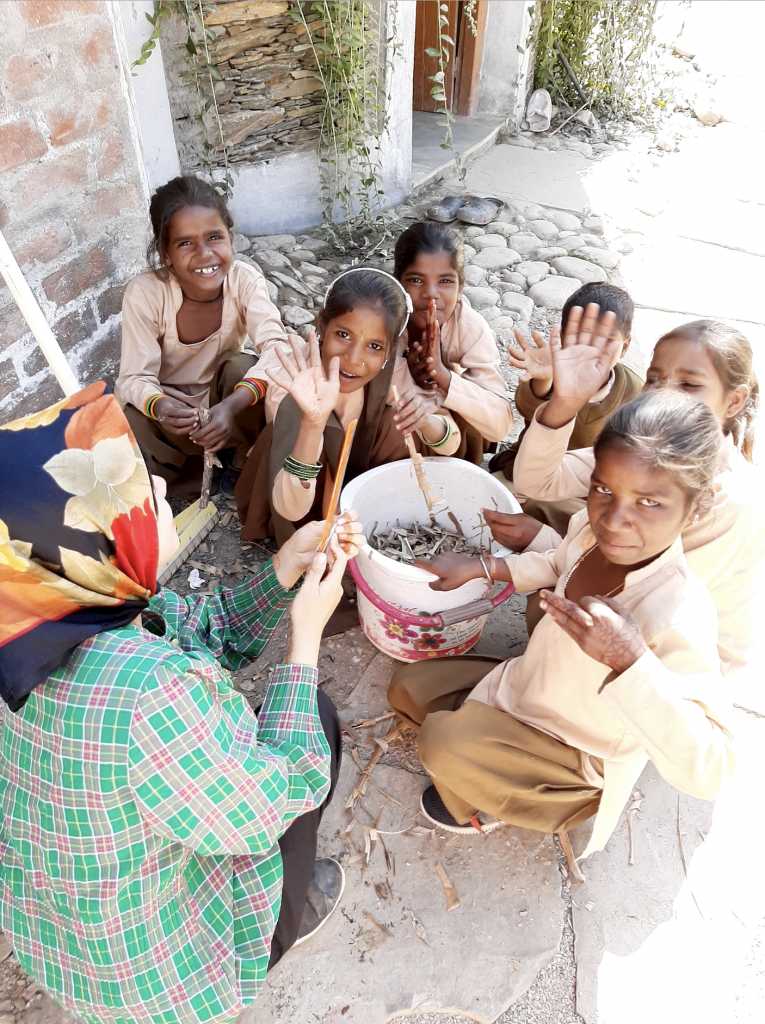
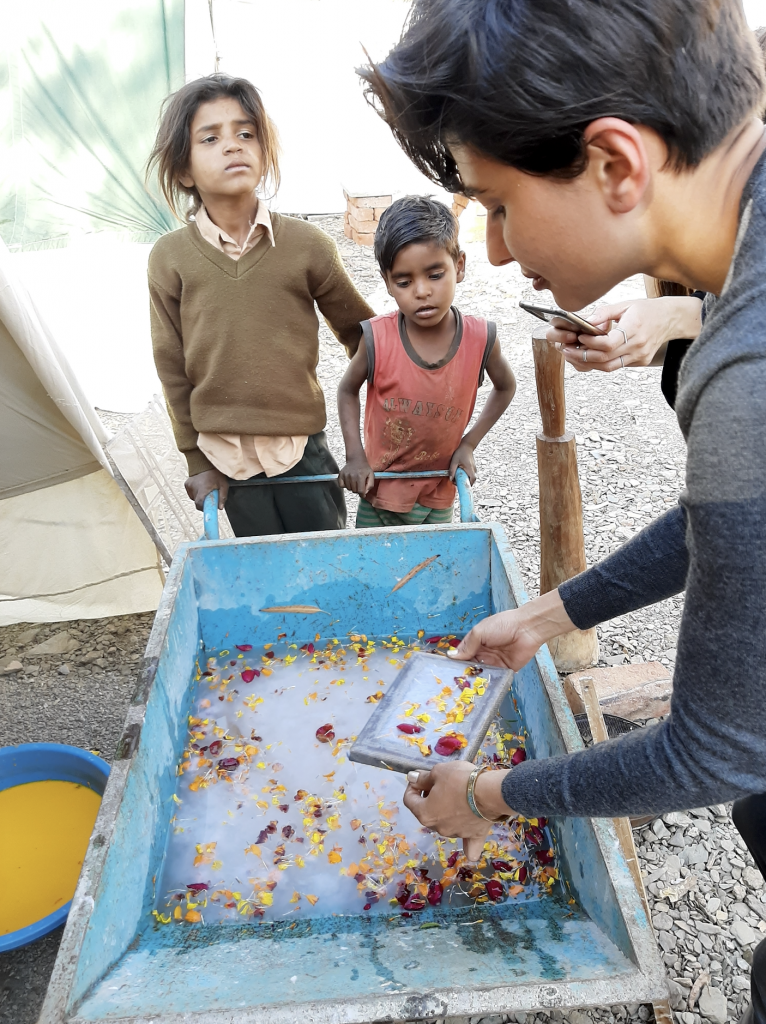
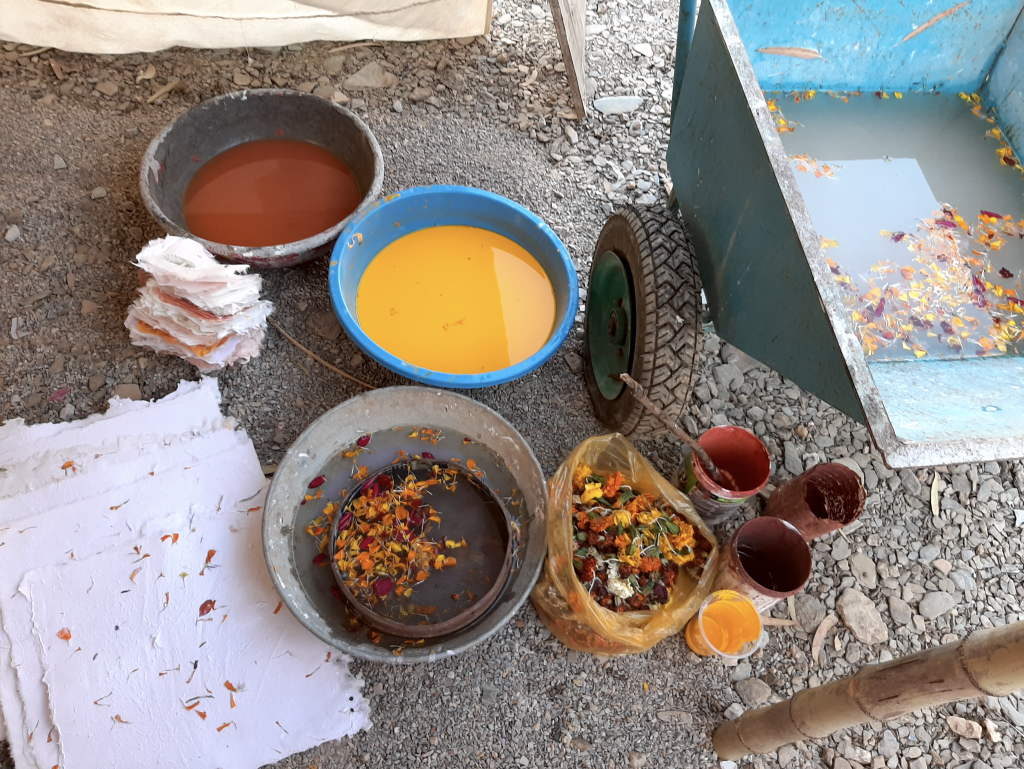
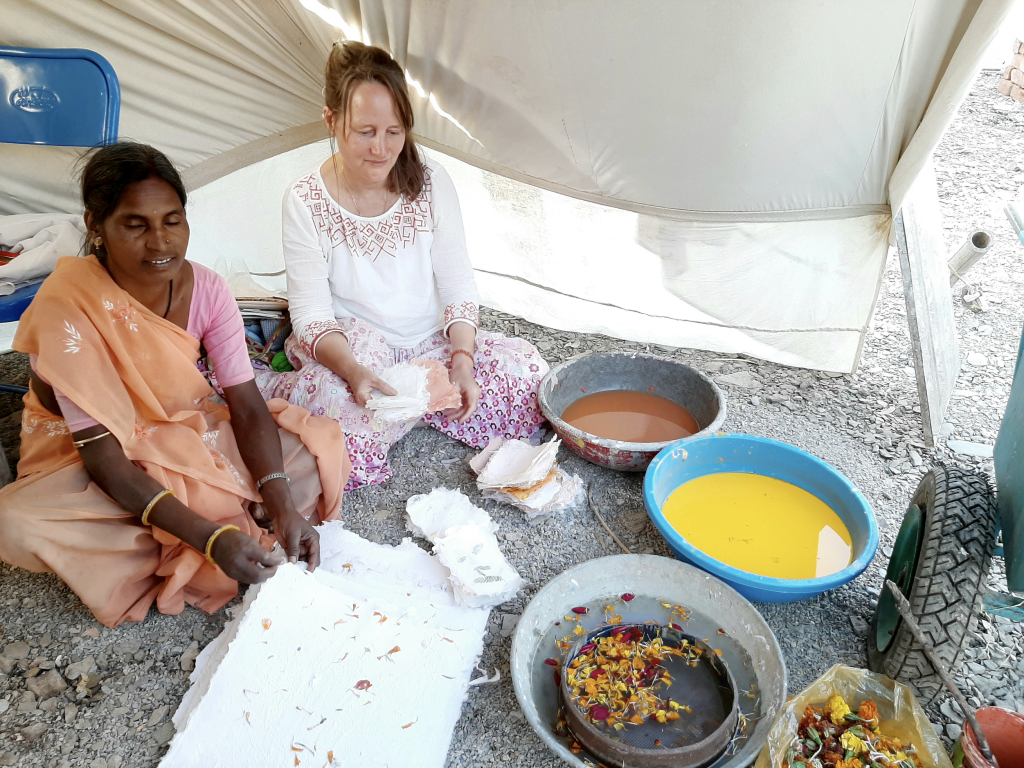
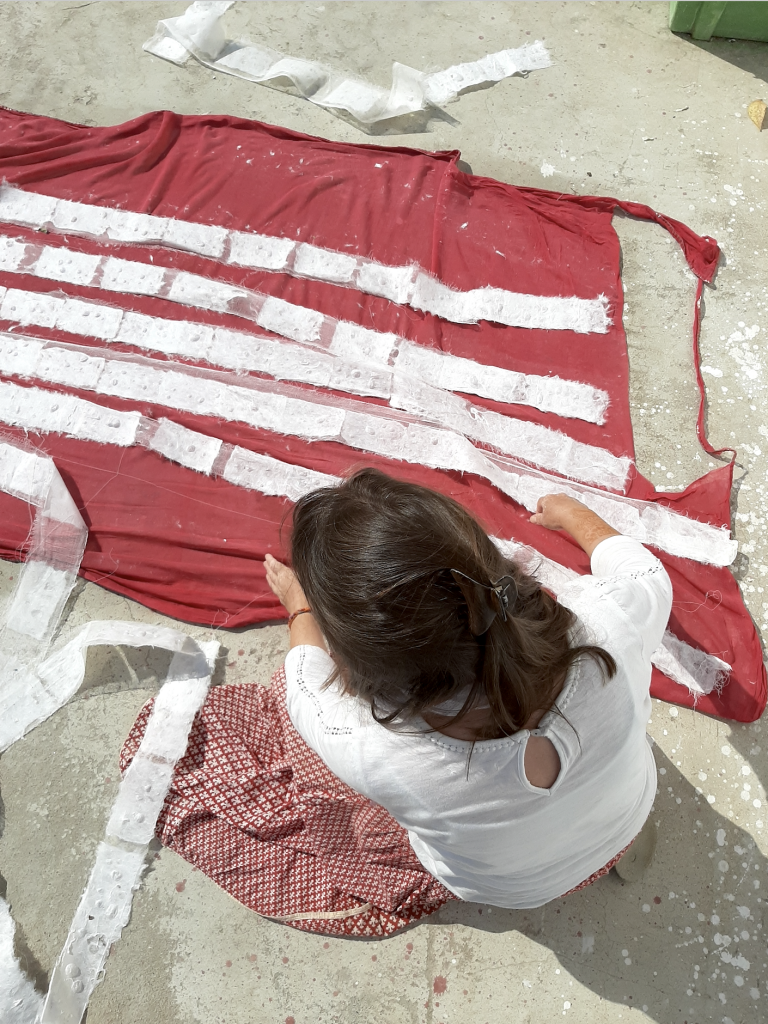
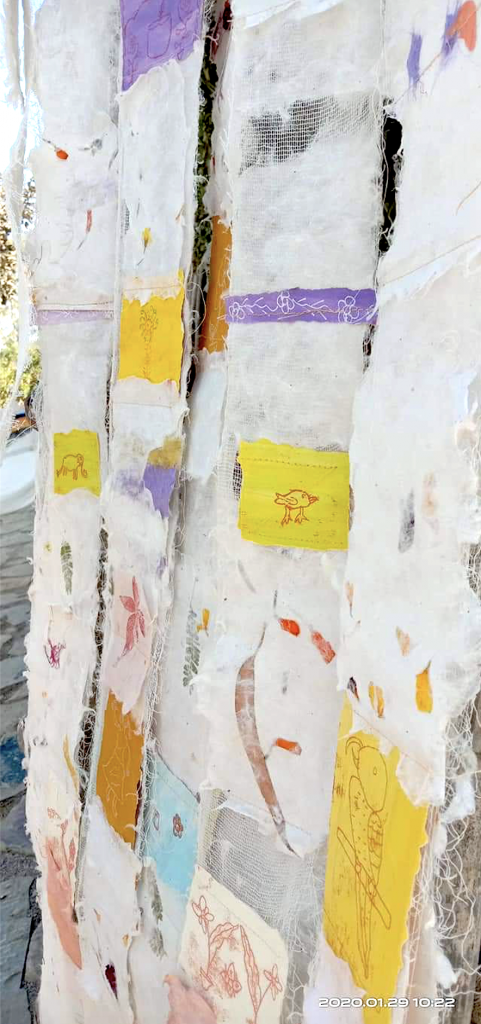
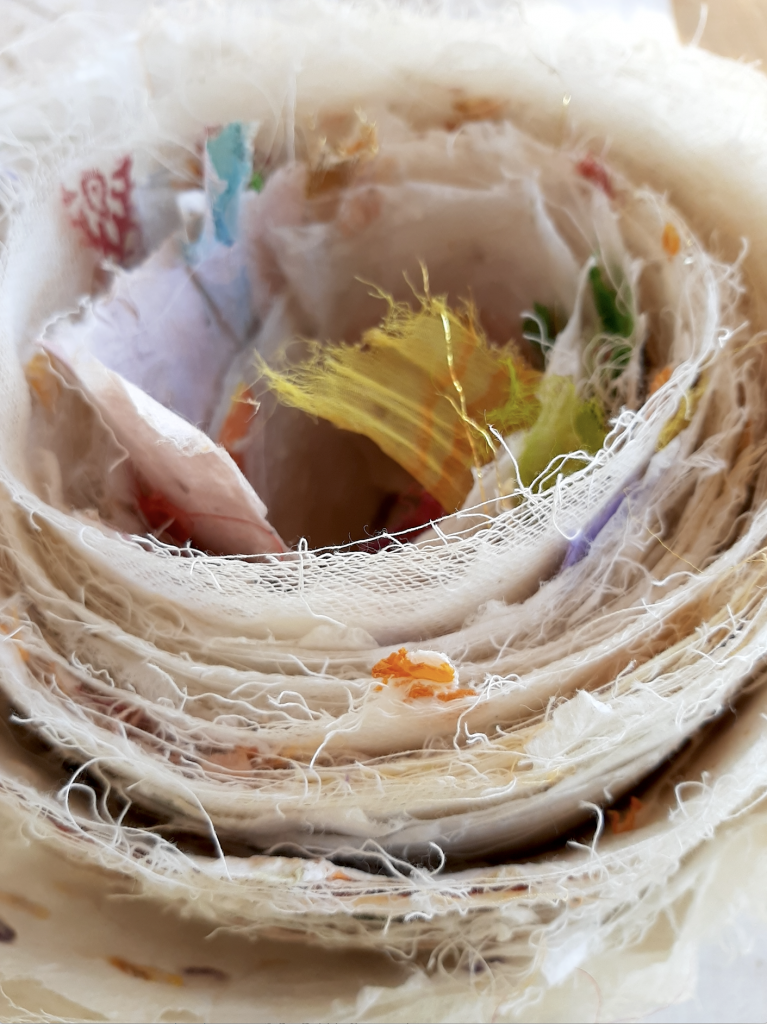
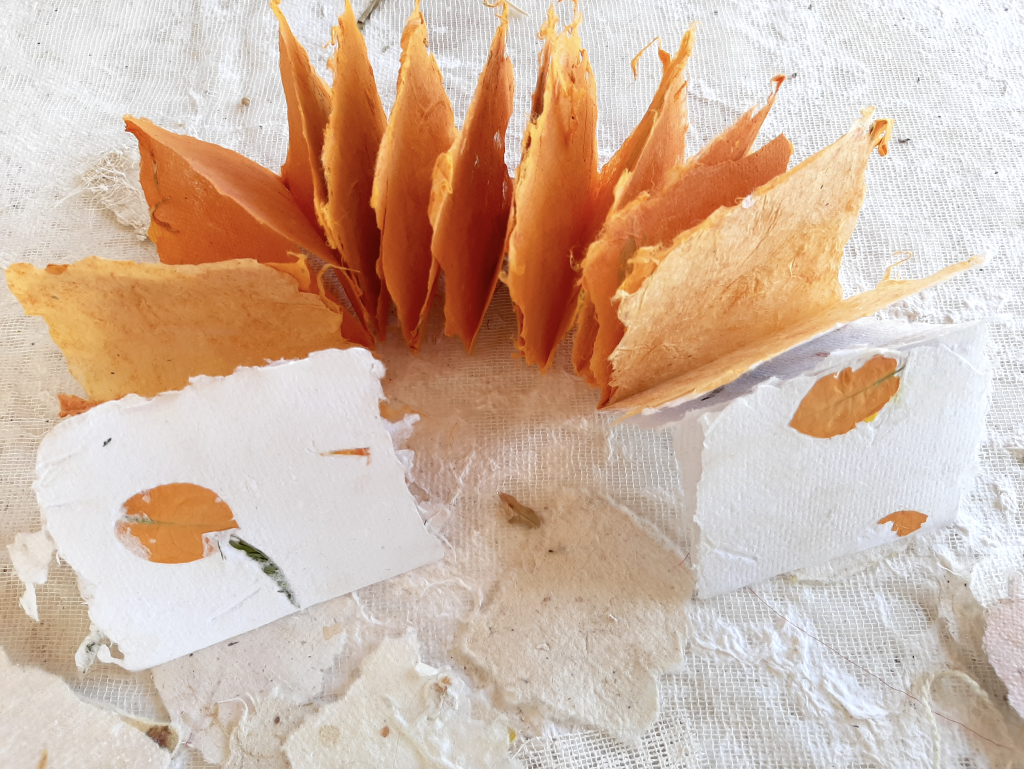
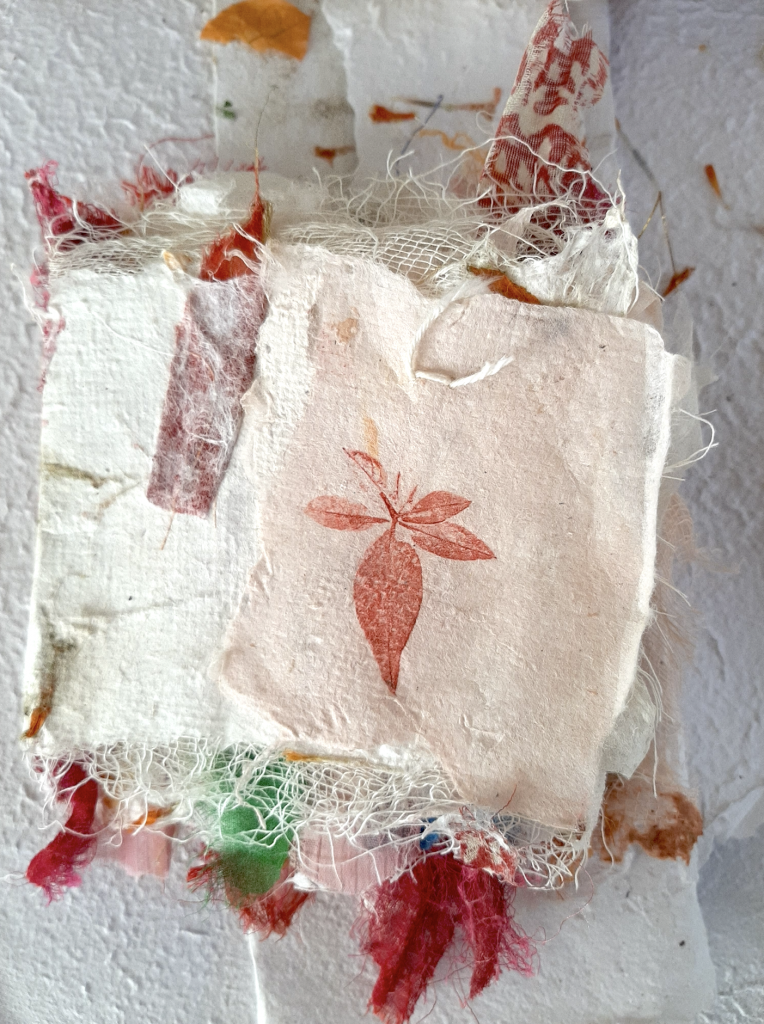
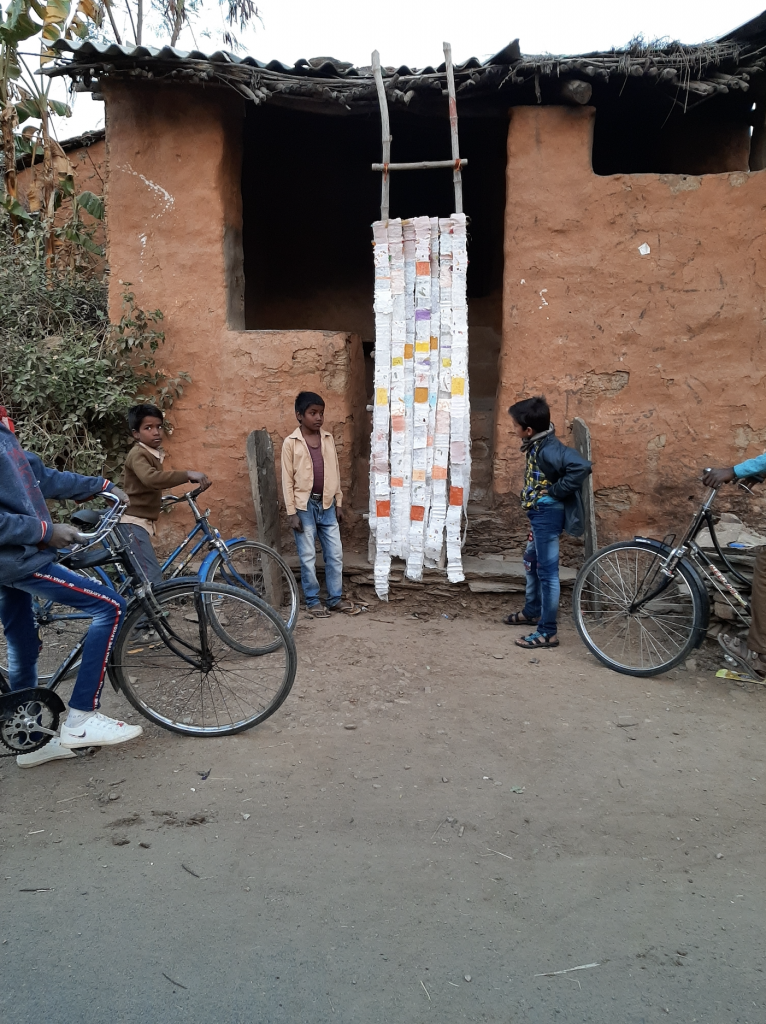
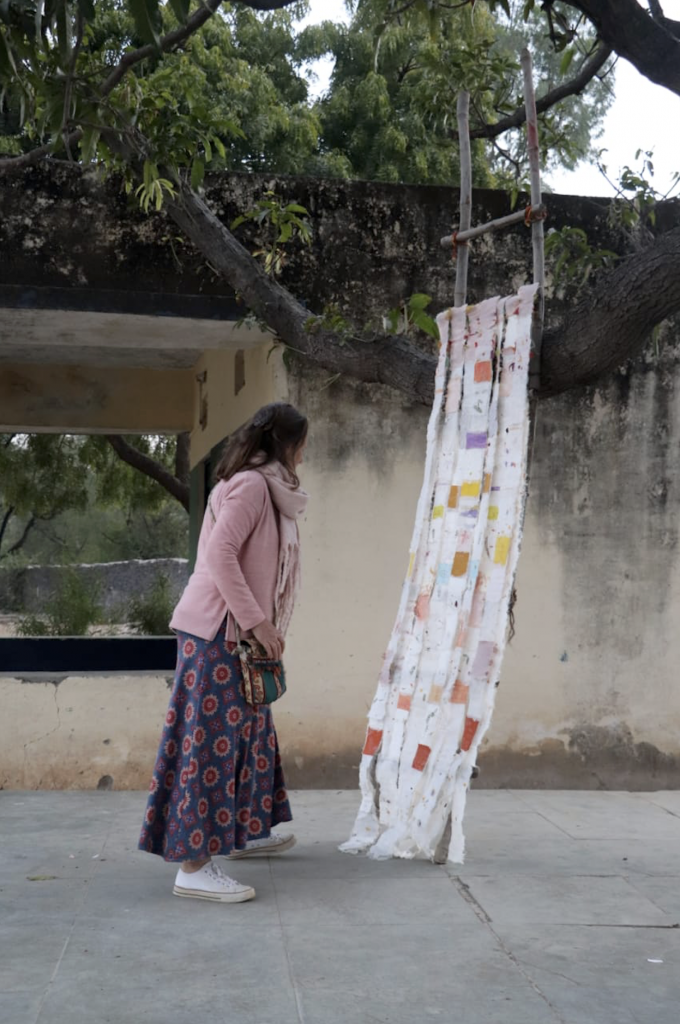
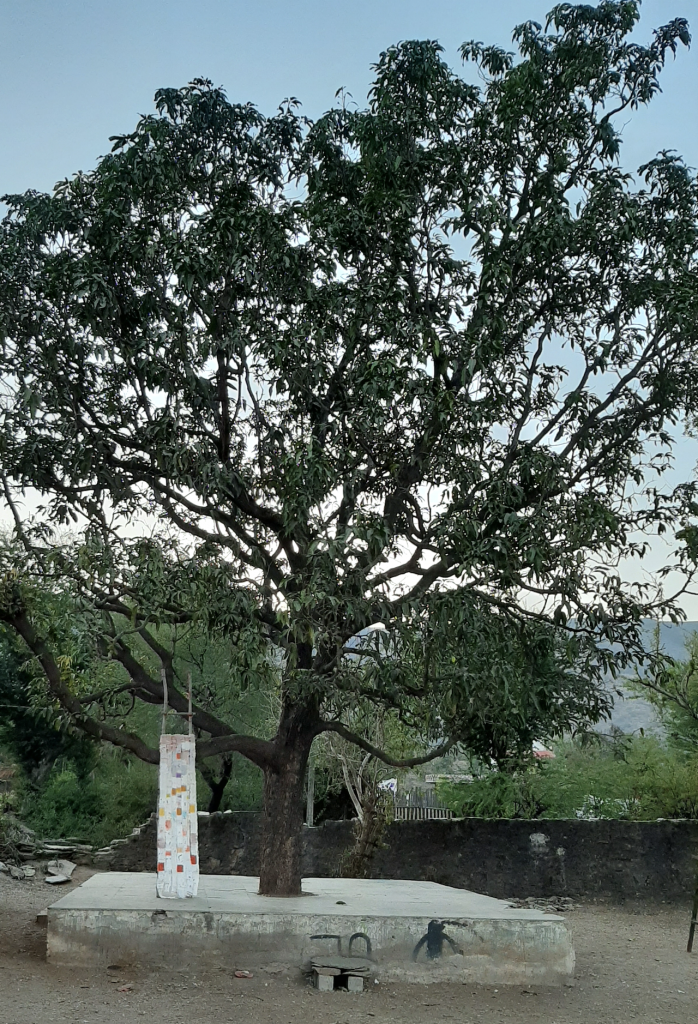
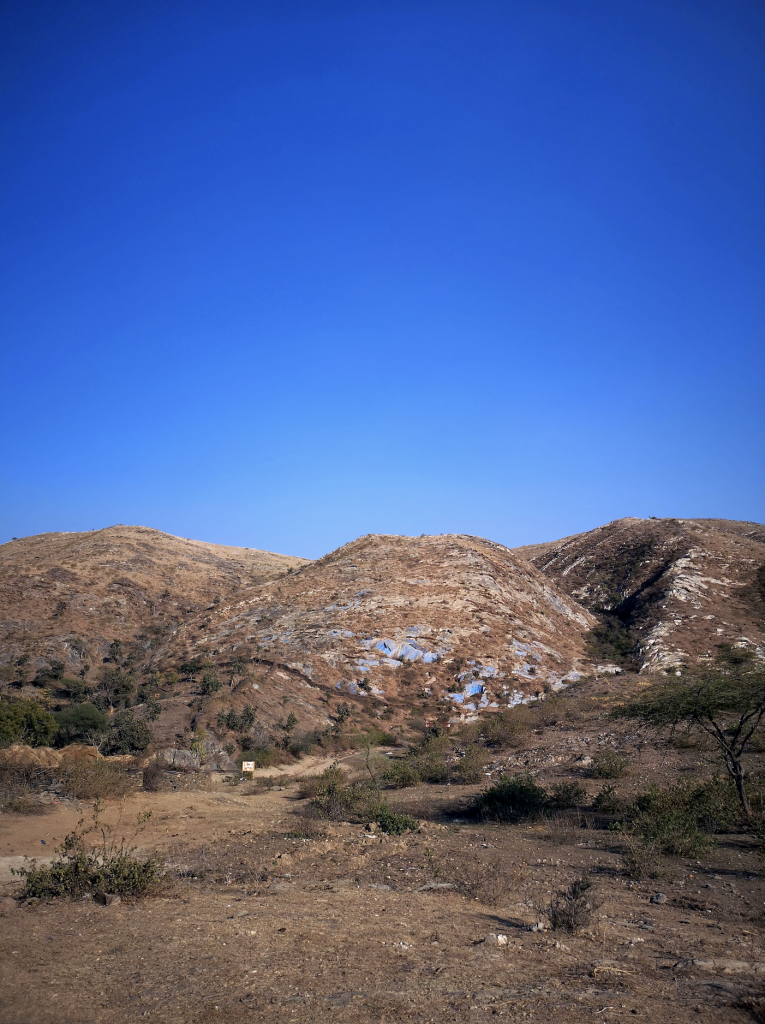
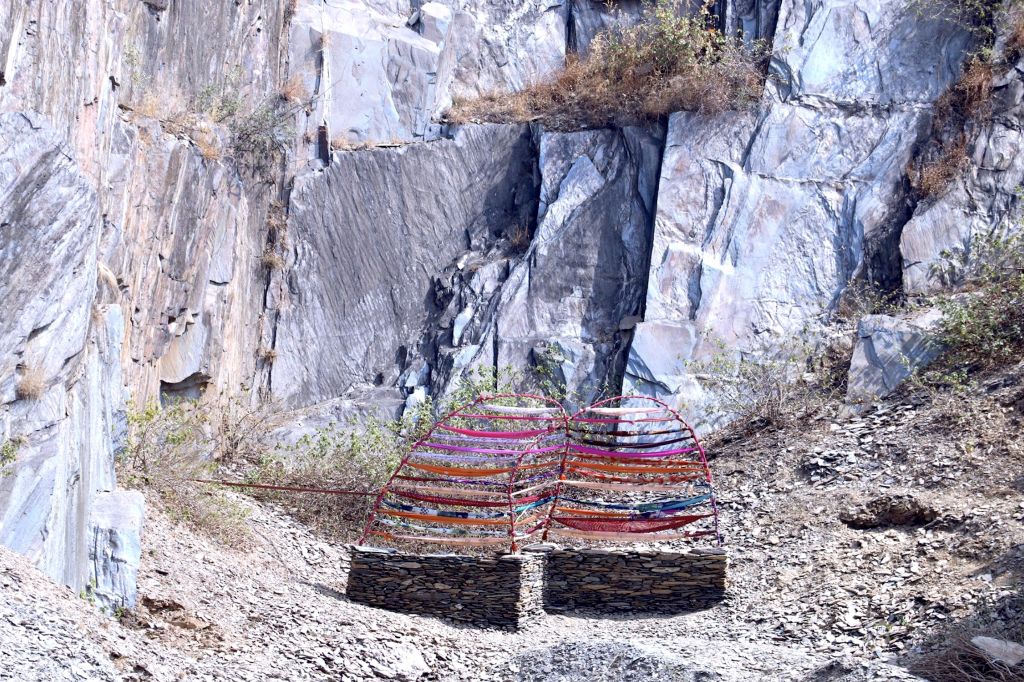
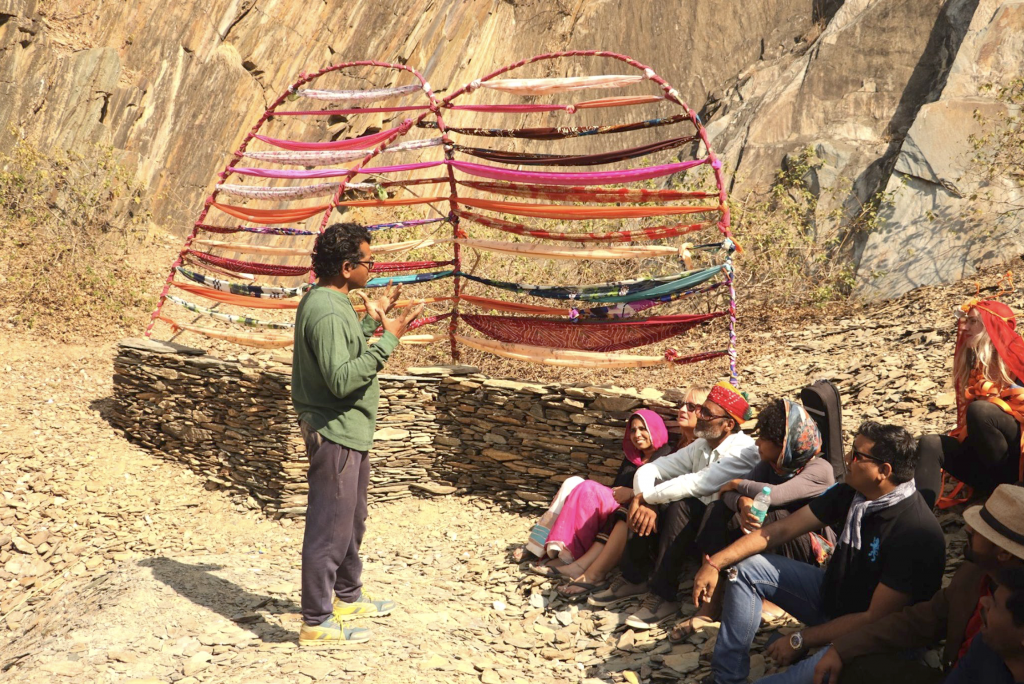
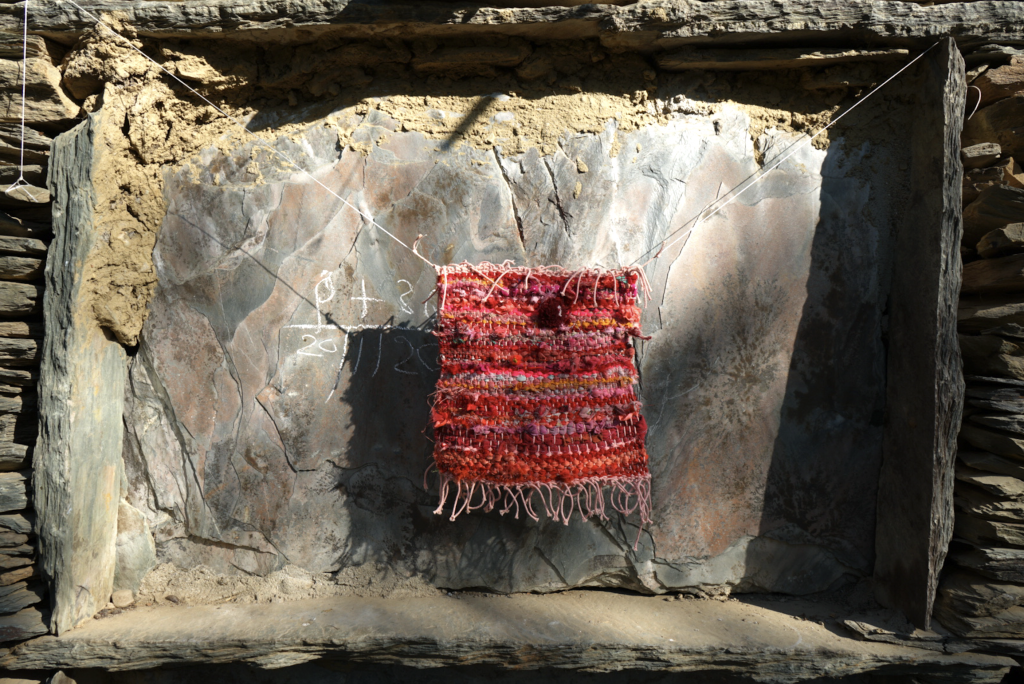
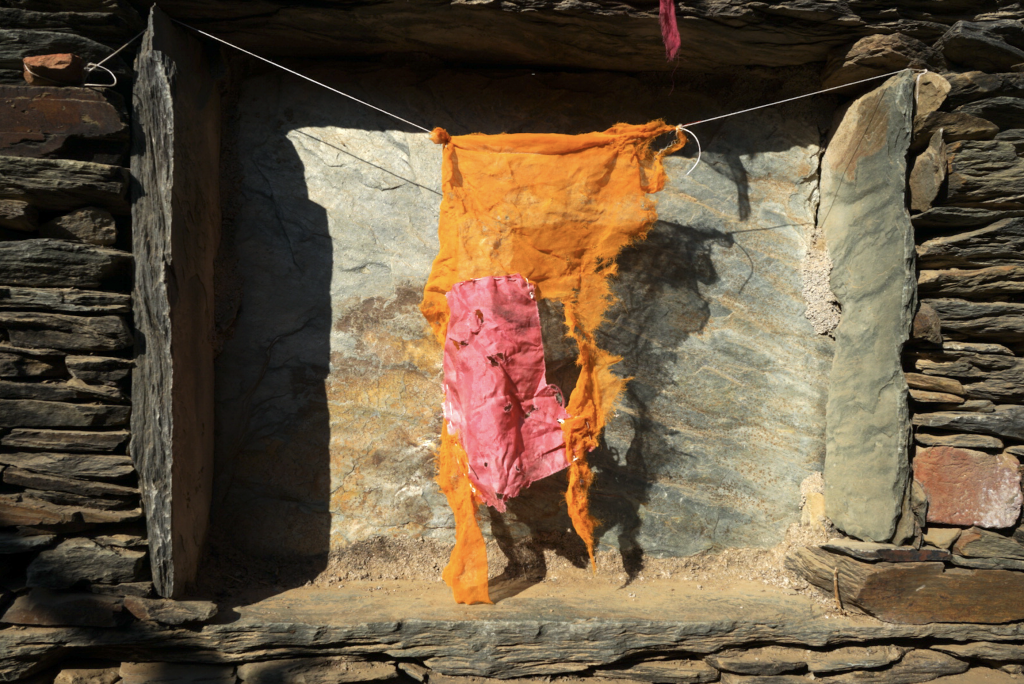
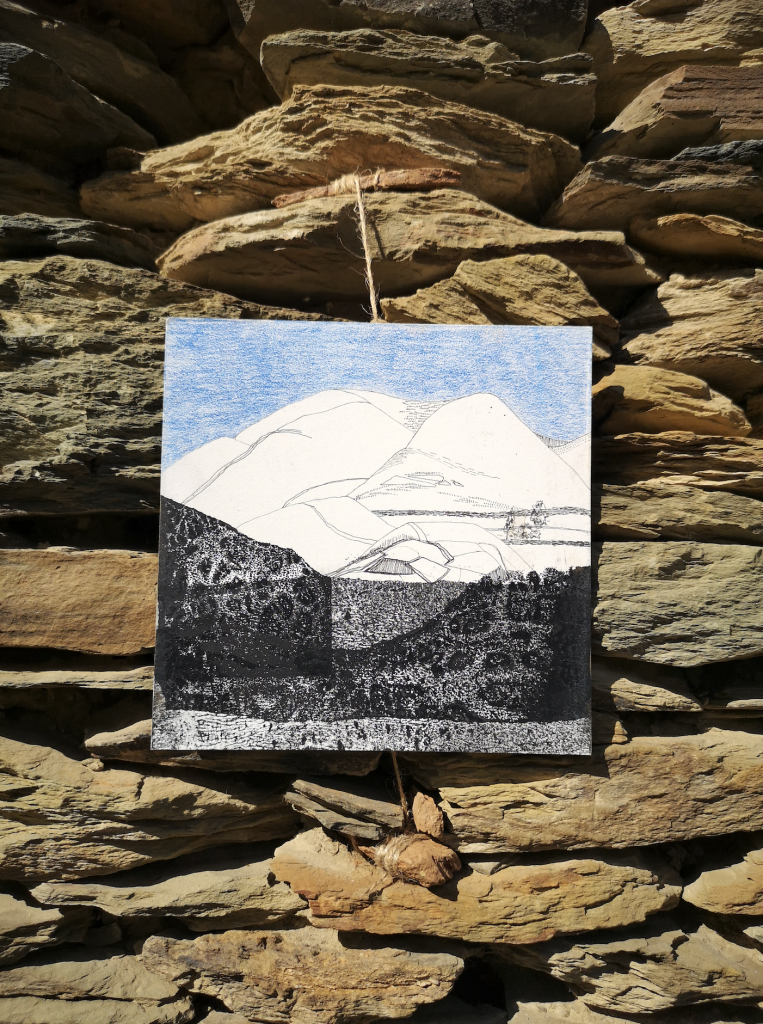
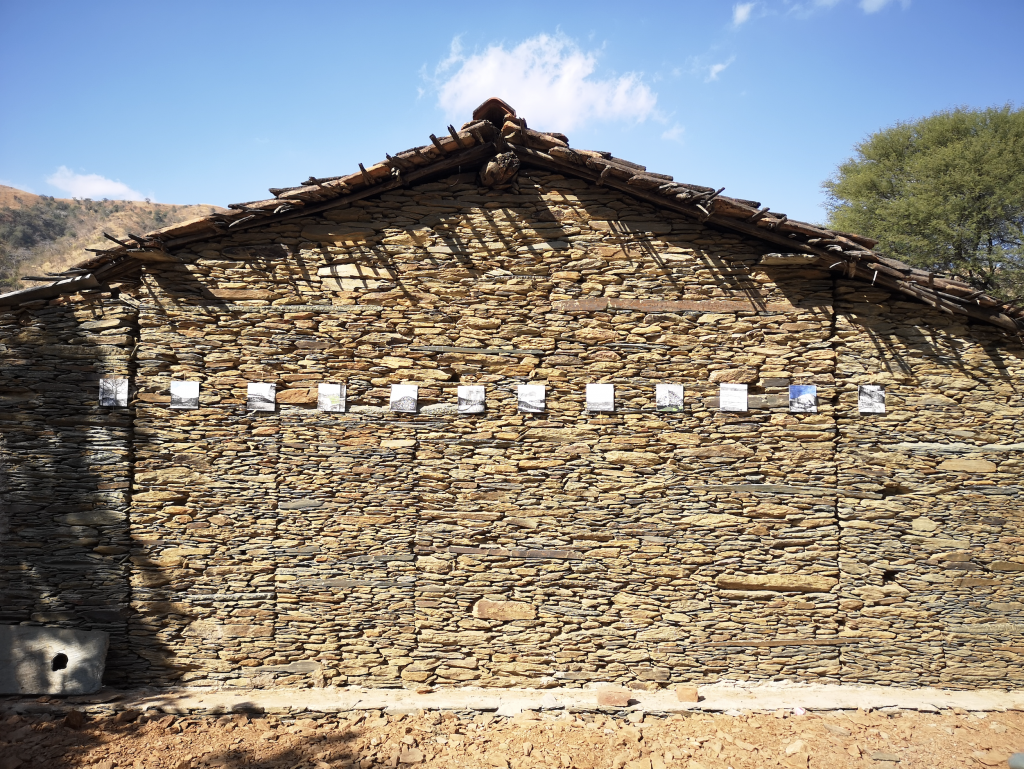
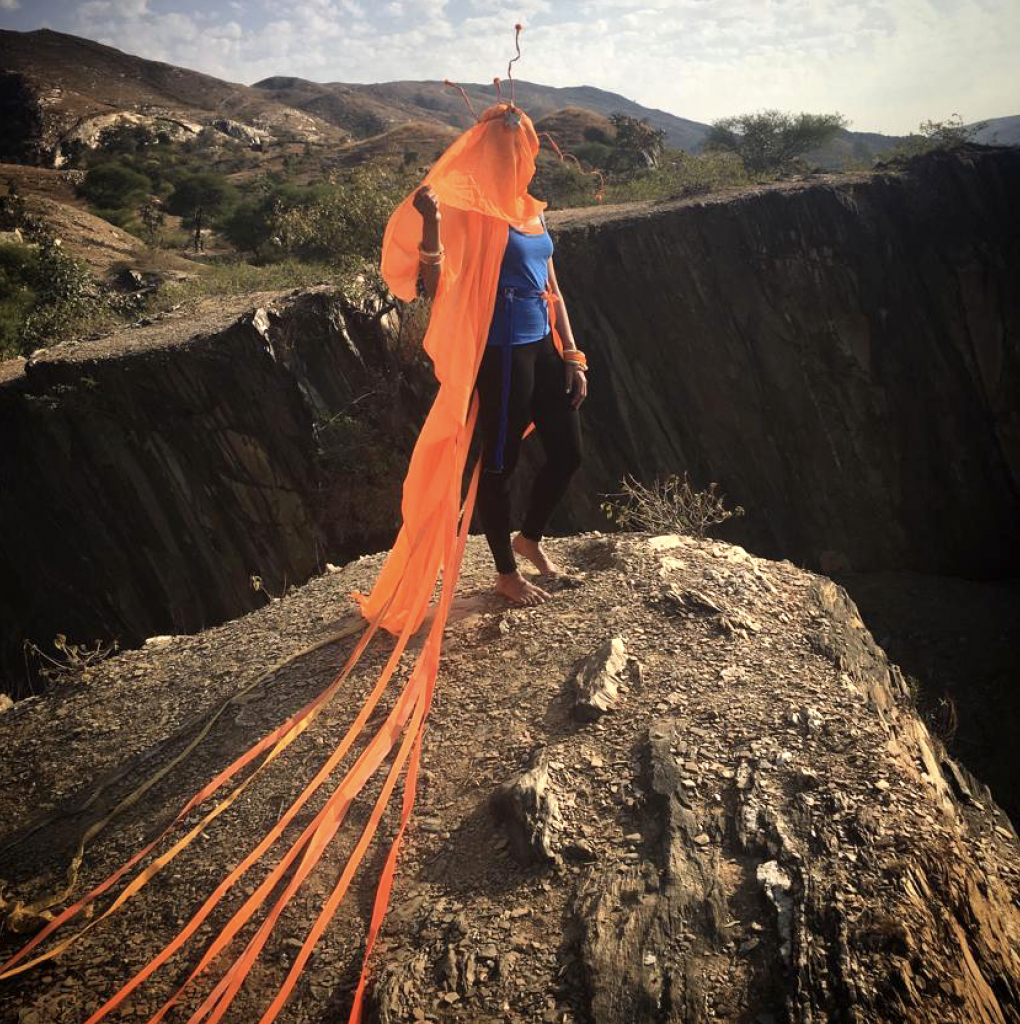
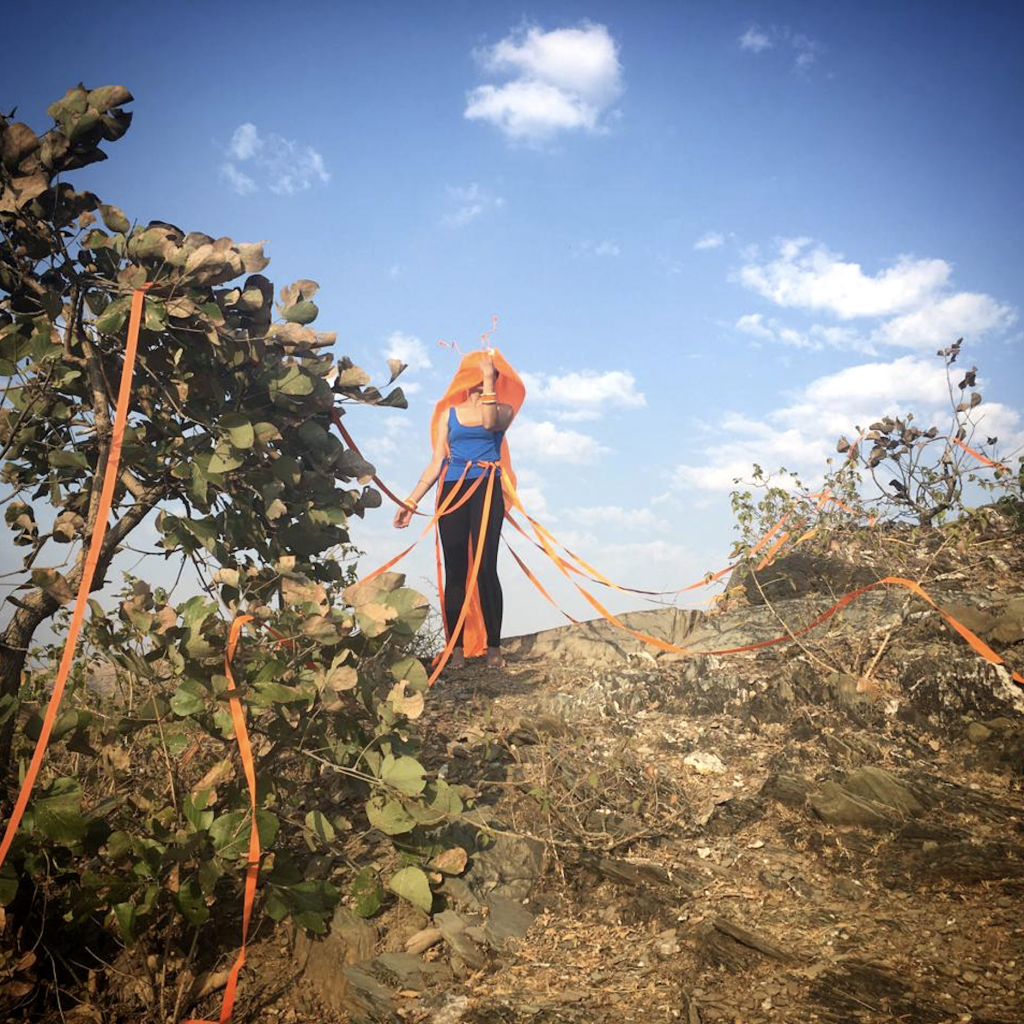
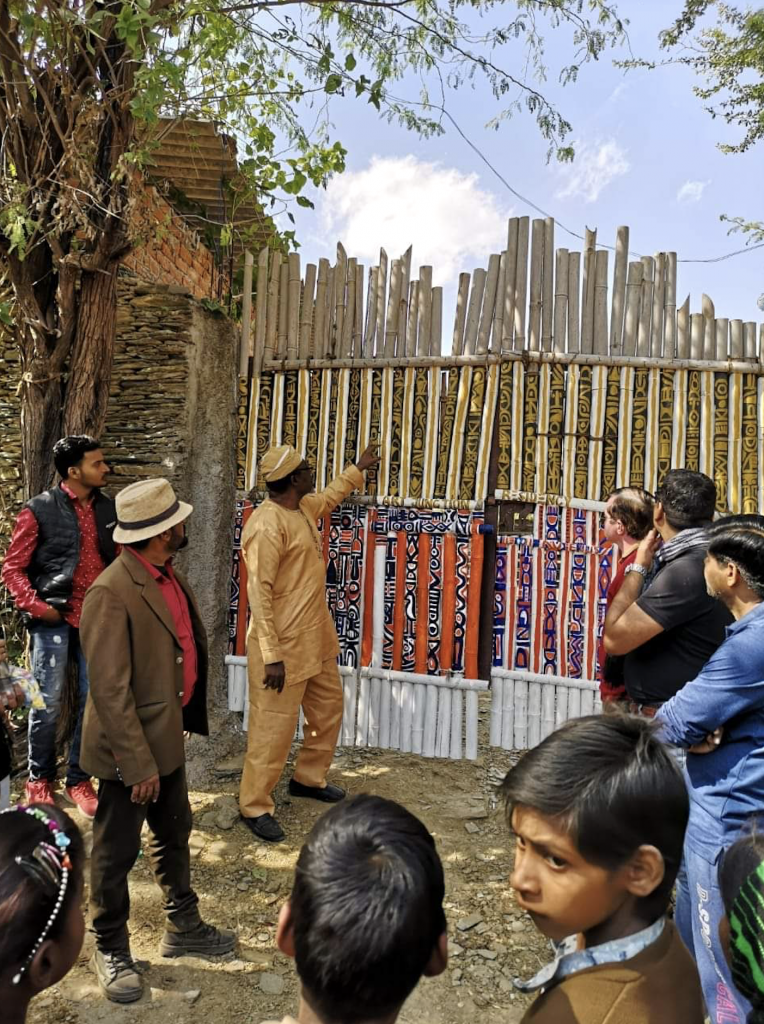
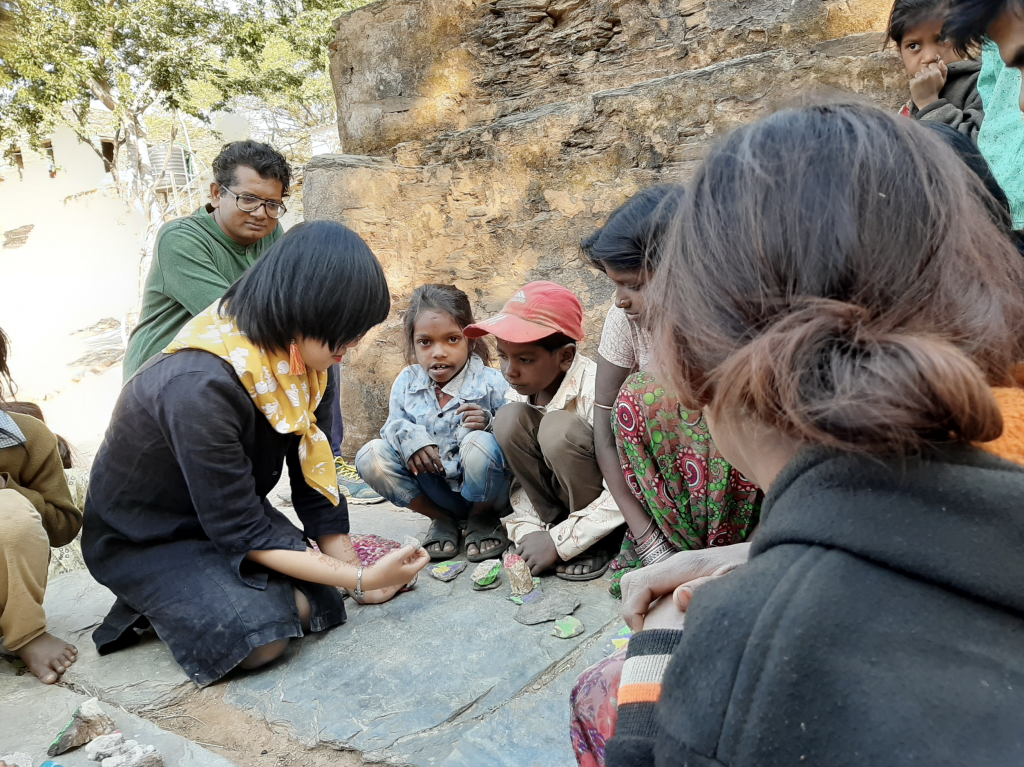
I love this. During the 1990s I visited India three times, the last in 97 for 4 months mostly in Rajasthan. Your work and that of the other artists bring back to me the richness of the culture and landscape of India and the impact it had on my own work. To travel to other communities brings in to focus our own concerns. Both your watercolours and the paper-works are beautiful. The final piece hung from the village ladder so rich a fusion of your own and the children’s work.
Now I want to go back there. Thankyou.
Most welcome back in Rajasthan @art junction residency,. https://artjunctionudr.wordpress.com/